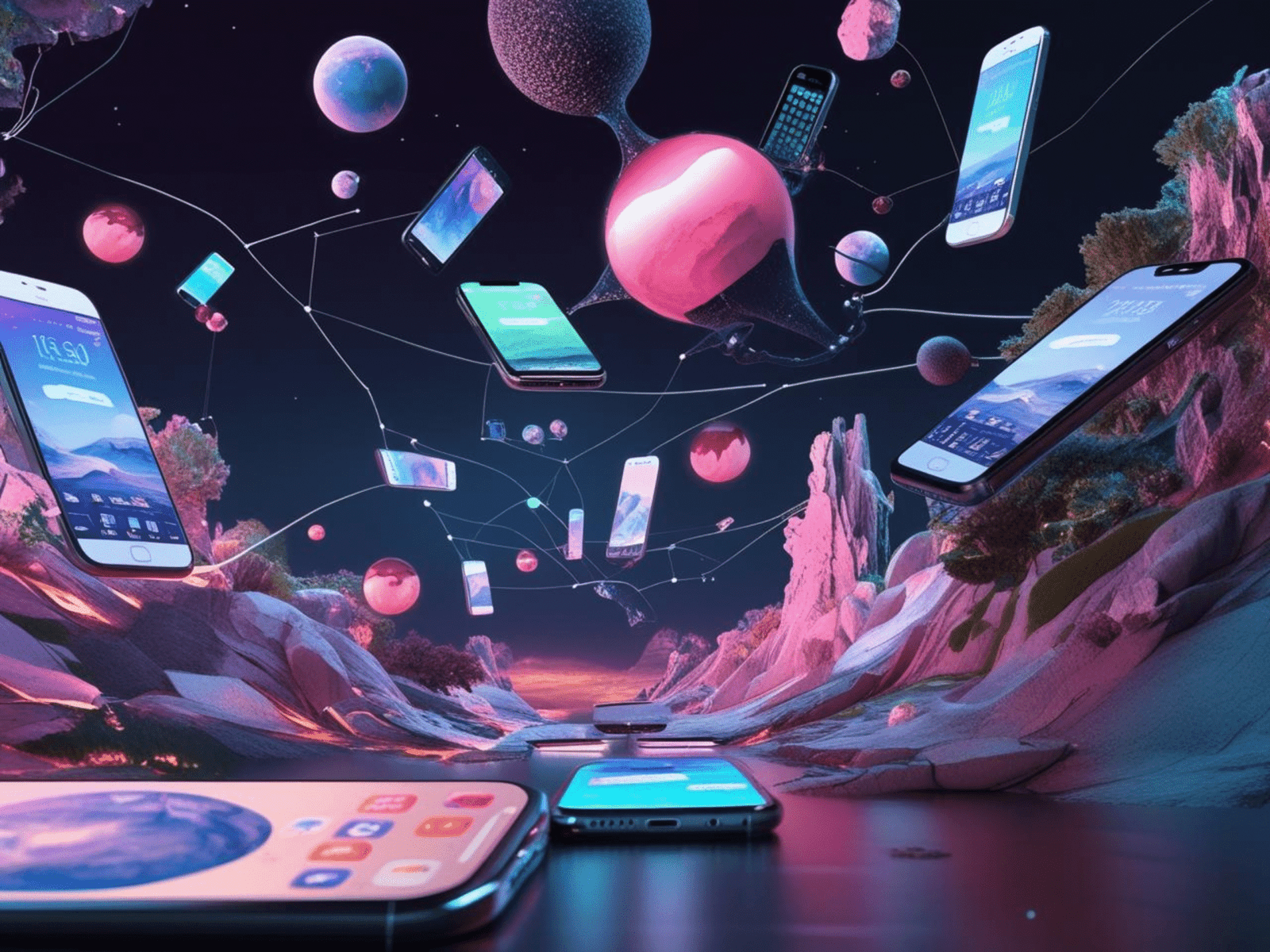Table of Contents
ToggleMobile Trends and Lifestyle: Shaping the Future
In the past two decades, mobile technology has transformed from a luxury to a necessity, deeply influencing the way we work, communicate, and live. With smartphones becoming more powerful, versatile, and intelligent, they are no longer just communication tools — they are lifestyle companions. The latest mobile trends are not only shaping consumer behavior but also redefining modern living.
The Rise of 5G Connectivity
The rollout of 5G networks has been one of the most significant mobile developments in recent years. With faster speeds, lower latency, and improved reliability, 5G is enabling new possibilities — from high-quality video streaming to advanced mobile gaming and seamless video conferencing. For many, this translates into more efficient remote work, better entertainment experiences, and faster access to information.
Foldable and Flexible Displays
Foldable smartphones have shifted from futuristic concepts to real, consumer-ready products. These devices offer larger displays without compromising portability, making them ideal for multitasking, creative work, and immersive media consumption. As the technology matures, foldables are becoming symbols of style and innovation in everyday life.
AI-Powered Personalization
Artificial Intelligence (AI) is at the core of many mobile features today — from voice assistants to personalized content recommendations. AI helps predict user needs, optimize battery life, enhance photography, and even improve health tracking. This personal touch allows devices to integrate more seamlessly into daily routines.
Mobile Payments and Digital Wallets
The shift towards cashless transactions has accelerated with the rise of mobile payment apps and digital wallets. Services like Google Pay, Apple Pay, and various UPI-based platforms have made it easy to pay bills, shop online, or transfer money instantly. For many, this has not only improved convenience but also promoted safer, contactless lifestyles.
Health and Fitness Integration
Modern smartphones and wearables are empowering users to take charge of their health. From tracking steps and heart rate to monitoring sleep patterns and stress levels, mobile technology has become a personal wellness coach. This trend is particularly relevant in an era where health consciousness is on the rise.
The Social Media Lifestyle
Social media continues to drive mobile usage trends. Platforms like Instagram, TikTok, and YouTube have transformed into cultural hubs where trends, news, and entertainment converge. Smartphones have turned everyone into potential content creators, influencing fashion, travel, food, and even career choices.
Sustainability in Mobile Technology
Consumers are becoming more environmentally conscious, pushing mobile brands to adopt eco-friendly practices. From using recycled materials to offering trade-in and recycling programs, sustainability is becoming a key selling point for many devices. This shift aligns with a lifestyle that values responsibility alongside convenience.
Conclusion
Mobile technology trends are not just about devices, they are about the lifestyle changes they inspire. From how we work and shop to how we entertain ourselves and stay healthy, smartphones are at the heart of modern living. As innovations like augmented reality, advanced AI, and sustainable designs continue to evolve, the relationship between mobile trends and lifestyle will only grow stronger, shaping the future in ways we are only beginning to imagine.
How Smartphones Are Changing Social Interaction
In just over a decade, smartphones have evolved from luxury gadgets to essential everyday tools, reshaping how people communicate, connect, and maintain relationships. While these pocket-sized devices bring convenience and speed to our interactions, they are also transforming the very nature of human connection—sometimes in subtle, and sometimes in profound, ways.
Instant Communication and Global Connectivity
Smartphones have eliminated many traditional communication barriers. With messaging apps, social media platforms, and video calls, people can interact across continents in real-time. A friend in New York can share a moment instantly with someone in Delhi, and families separated by distance can maintain a sense of closeness through frequent updates.
This constant connectivity has not only strengthened personal bonds but also expanded social circles beyond geographical limits.
Shaping Social Behavior
The way we initiate, maintain, and end conversations has shifted. Emojis, GIFs, and short-form content have introduced new non-verbal “digital languages.” Smartphones have also enabled asynchronous communication—allowing people to respond at their convenience, which can reduce pressure but may also weaken the depth of conversations.
The Rise of Social Media-Driven Interaction
Platforms like Instagram, WhatsApp, and TikTok have become central to modern socializing. People no longer just talk—they post, react, and comment. While this encourages participation and creativity, it can also create a tendency to measure interactions by likes, shares, and follower counts rather than genuine engagement.
Challenges to Face-to-Face Communication
Despite their benefits, smartphones can sometimes hinder in-person interactions. “Phubbing” (snubbing someone in favor of looking at your phone) has become a common social phenomenon. Conversations are often interrupted by notifications, reducing the quality of attention people give to each other.
This can lead to weaker emotional connections and a sense of isolation, even when surrounded by others.
Cultural and Generational Shifts
Younger generations, having grown up with smartphones, are more comfortable with digital interaction than face-to-face conversation. This shift is influencing workplace communication styles, dating norms, and even the way families interact at home.
A Tool for Inclusion and Accessibility
On a positive note, smartphones have enabled people with disabilities to participate more fully in social life. Text-to-speech features, real-time translation, and accessibility apps allow for greater inclusion and communication across barriers.
Conclusion
Smartphones have undeniably revolutionized social interaction—making it faster, more convenient, and more diverse. However, they have also introduced challenges in maintaining deep, meaningful human connections. The key lies in balance: embracing the benefits of instant connectivity while preserving the authenticity and emotional richness of face-to-face communication.
The Environmental Effects of Smartphones
Smartphones have revolutionized communication, work, entertainment, and access to information. However, behind their sleek designs and cutting-edge features lies a significant environmental footprint. From raw material extraction to manufacturing, usage, and disposal, every stage of a smartphone’s life cycle impacts the planet.
Resource Extraction and Mining
The production of smartphones requires a wide range of metals and minerals, such as lithium, cobalt, nickel, gold, and rare earth elements. Mining these resources often involves
Habitat destruction: Large-scale mining can devastate ecosystems and displace wildlife.
Pollution: Toxic chemicals like mercury and cyanide used in mineral extraction can contaminate soil and water sources.
Human rights concerns: In some regions, mining operations are linked to unsafe labor practices and child labor.
Manufacturing and Carbon Emissions
Smartphone production is energy-intensive. The manufacturing process, including refining metals, producing chips, and assembling components, contributes significantly to greenhouse gas emissions. Studies show that over 80% of a smartphone’s total carbon footprint is generated before it even reaches the consumer.
Usage Phase Energy Consumption
Although smartphones are relatively energy-efficient devices, their environmental impact during use comes from:
Charging habits and the electricity source (fossil fuels vs. renewable energy).
Increased demand for cloud storage and internet services, which require large data centers that consume massive amounts of electricity.
E-Waste and Disposal Issues
Smartphones have short average lifespans due to rapid technological advancements and consumer trends. Discarded devices contribute to electronic waste (e-waste), which
Contains hazardous substances like lead, mercury, and cadmium that can leach into the environment.
Is often improperly disposed of, especially in developing countries where recycling facilities are limited.
Packaging and Transport
Shipping smartphones worldwide involves significant fossil fuel consumption, while excessive packaging contributes to waste generation. Although many companies now use recyclable or biodegradable packaging, the overall impact remains substantial.
Possible Solutions
To reduce the environmental impact of smartphones, various stakeholders can take action:
Manufacturers: Adopt eco-friendly materials, extend product lifespans, and offer repair-friendly designs.
Consumers: Use devices longer, recycle old phones responsibly, and choose sustainable brands.
Governments: Enforce stricter e-waste regulations and promote sustainable mining practices.
Conclusion
While smartphones are an integral part of modern life, their environmental costs cannot be ignored. Sustainable production, responsible consumption, and improved recycling systems are essential to mitigate their impact. By making conscious choices, both manufacturers and consumers can help ensure that technology advances without compromising the health of our planet.
Mobile Gaming
In just over a decade, mobile gaming has transformed from simple, pixelated puzzles to immersive, high-definition experiences rivaling those on PCs and consoles. With the rapid rise of smartphones and improved internet connectivity, mobile gaming has become one of the most influential forces in the entertainment industry.
Why Mobile Gaming Is So Popular
Several factors have contributed to the explosive growth of mobile gaming:
Accessibility: Nearly everyone owns a smartphone, making games available to a massive audience without the need for expensive hardware.
Affordability: Many mobile games are free-to-play, with revenue generated through in-game purchases and ads.
Portability: Players can enjoy games anywhere—on a bus, during lunch breaks, or at home.
Social Connectivity: Online multiplayer modes, leaderboards, and chat functions allow players to connect with friends or strangers worldwide.
Impact on the Gaming Industry
Mobile gaming now dominates the global gaming market, generating more revenue than both PC and console gaming combined. It has also blurred the lines between casual and hardcore gaming, with genres ranging from quick puzzle games to competitive esports titles. Many developers prioritize mobile platforms first due to their wider reach.
Challenges and Concerns
Despite its success, mobile gaming faces challenges:
Monetization Practices: Some games rely heavily on microtransactions, raising concerns about fairness and gambling-like mechanics.
Addiction and Screen Time: The ease of access can lead to excessive play, especially among younger audiences.
Hardware Limitations: While high-end devices run games smoothly, budget phones may struggle with performance.
The Future of Mobile Gaming
With the integration of 5G networks, cloud gaming, and augmented reality (AR), the future looks even more promising. Technologies like VR-enabled mobile devices and AI-driven game design are expected to make mobile gaming more immersive and interactive.
Conclusion
Mobile gaming has evolved into a cultural and economic powerhouse, reshaping the way people interact with games. As technology continues to advance, the line between mobile and traditional gaming platforms will blur even further, making gaming more inclusive, immersive, and innovative than ever before.
How Smartphones Are Replacing Laptops for Work
In the last decade, smartphones have evolved from simple communication devices into powerful, multifunctional tools. With advancements in processing power, battery life, and connectivity, smartphones are increasingly replacing laptops for professional tasks. From remote work to business management, the compact device in your pocket is proving to be more than just a phone—it’s becoming a complete workstation.
Technological Advancements
Modern smartphones now feature processors comparable to entry-level laptops, with multi-core CPUs, high RAM capacity, and ample storage. Combined with high-resolution displays, fast refresh rates, and large screens (thanks to foldable phone technology), smartphones can handle complex applications such as document editing, graphic design, and even coding.
Mobile Office Applications
The availability of mobile-optimized productivity apps like Microsoft Office, Google Workspace, Slack, Trello, and Zoom means professionals can work seamlessly from their phones. These applications allow the creation, sharing, and editing of documents, spreadsheets, and presentations without the need for a laptop.
Cloud Integration
Cloud storage services such as Google Drive, Dropbox, and OneDrive have eliminated the dependency on physical storage. Files can be accessed, edited, and shared from anywhere, ensuring that work is never interrupted by location or device limitations. With strong internet connectivity, even large files can be managed directly from a smartphone.
Enhanced Communication Tools
Work today relies heavily on real-time communication and collaboration. Smartphones offer instant access to video conferencing, instant messaging, and team collaboration platforms, making them indispensable for remote teams. Built-in cameras and microphones often outperform entry-level laptop hardware, ensuring clearer calls and presentations.
Portability and Convenience
A smartphone fits in a pocket and can be used anywhere—on a train, at a coffee shop, or during travel—without the need for a bulky bag or charger. For professionals constantly on the move, this level of convenience is unmatched.
Accessories and Peripherals
With Bluetooth keyboards, wireless mice, and portable monitors, a smartphone can easily mimic a desktop or laptop experience. Many devices now support desktop modes (such as Samsung DeX or Motorola Ready For) that allow a phone to be connected to a larger display for a PC-like interface.
Cost Efficiency
Smartphones often serve multiple purposes—phone, camera, scanner, and now, computer—reducing the need to invest in separate devices. For startups and freelancers, this can mean significant cost savings.
Conclusion
While laptops are unlikely to disappear completely—especially for heavy computing tasks—smartphones will continue to eat into their market share for everyday office work. As 5G networks expand, mobile processors improve, and cloud-based applications become even more robust, smartphones could become the primary work device for millions.
The shift is not just technological but cultural. The workforce is becoming more mobile, flexible, and adaptable, and the smartphone is perfectly positioned to be the tool that supports this transformation.



